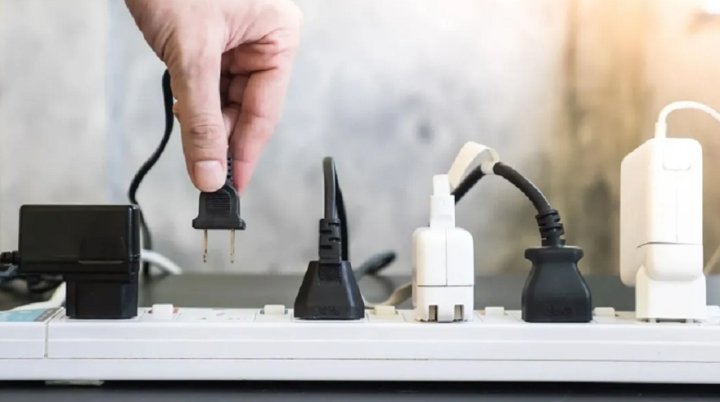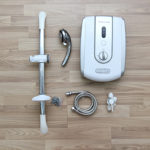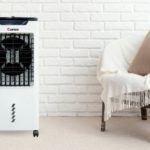Electricity bills are one of the major concerns for households during the summer. It is well known that air conditioning is the most power-consuming device during peak hot weather, but few would expect that some other “modest” devices also consume a significant amount of electricity.
So which devices consume the most electricity in a household?
This is one of the silent culprits that consumes a lot of electricity in your home. Although it has a relatively small power consumption, the refrigerator operates 24/7, resulting in a significant amount of electricity usage.
A 150-liter refrigerator with a power consumption of 100-150W will consume about 4 kWh to 5 kWh of electricity per day. Larger refrigerators with higher power consumption will consume about 6 kWh of electricity per day. In addition, during the summer, the refrigerator will work harder to keep things cool, and if you frequently open and leave the refrigerator door open, the electricity bill will increase even more.

Take note of the most power-consuming devices in your home
Air conditioner, air cooling machines
Air conditioners may not have the highest power consumption among household devices, but they consume the most electricity due to their high usage demand, especially during hot weather. Many households have the habit of keeping the air conditioner on almost year-round, and on extremely hot days, they switch from cooling mode to heating mode. To save electricity, regular maintenance of the air conditioner is necessary, as well as ensuring good insulation for the house to maintain a reasonable temperature and minimize the opening and closing of doors while the air conditioner is on,…
Rice cooker
This device does not consume a lot of electricity, but the way it is used can contribute to higher electricity bills. Many people start cooking rice early and leave it plugged in for hours, even after finishing the meal, just to keep it warm. This habit wastes energy because a 1.2-liter rice cooker usually has a power consumption of 350-400W, and if it operates for two hours, it will consume about 0.75 kWh of electricity.
Air cooler fan
A regular air cooler fan has a power consumption of 80-200W. If you run it for 6 hours a day, it will consume about 0.48-1.2 kWh of electricity.
A regular electric fan has a power consumption of about 40W. If you run it for 5 hours a day at the highest speed, you will have to pay for an additional 2 kWh of electricity per month compared to running the fan at the lowest speed.
Television
Many people underestimate the electricity consumption of televisions because they have relatively low power consumption. However, in reality, a 32-inch television with a power consumption of about 40W, if left on continuously day and night, can consume a significant amount of electricity. Even in standby mode, a TV left plugged in can cost you an additional 500,000 VND (approximately 21 USD) in electricity bills per year.
Computers
Computers (both desktop and laptop) continue to consume power even when turned off. These devices consume about 96W of electricity per day. So, you will end up paying for an additional 3 kWh of electricity per month for each computer. If you have the habit of putting your computer in “sleep” mode, this number can increase several times.
To save electricity, remember to turn off the power and unplug when you are not using your computer.

Many devices silently consume electricity even when not in use.
Electric water heater
Electric water heaters are commonly used daily, and their power consumption can reach 3000W. Due to their high frequency of use, leaving the water heater on throughout the day can result in a consumption of about 20 times more electricity.
During the summer, you may not need hot water, but do not forget to turn off the switch when not in use. When you need hot water, simply turn on the switch 30 minutes before taking a shower, and when the temperature indicated on the display reaches the desired temperature, turn it off. This method can save you a significant amount of electricity.
Devices left plugged in
Some devices quietly consume electricity in the house, draining a significant portion of your household budget without your notice.
On normal days, when most people are away at work, all electrical devices in the house are turned off. However, why is your electricity bill still high? It’s because when you turn off the switch, the devices are actually put in standby mode. If you do not unplug them, they will continue to run and consume electricity. Over time, they will silently consume a significant amount of electricity, causing your electricity bill to increase.
These are energy-consuming devices even when they are turned off, thanks to their “phantom power” consumption. Examples include washing machines, dryers, desktop computers, Wi-Fi routers, and televisions.
Limit this energy drain by unplugging the devices from the power outlet. Another convenient method is to plug these devices into a power strip, which allows you to turn off multiple outlets with just one plug.
According to VTC.vn
6 Tips to Consider Before Buying a Ceiling Fan
Are you looking to purchase a ceiling fan for your big space? Learn more about what factors to consider before making the decision with this helpful guide. From enhancing the atmosphere of your room to providing ventilation and circulation, there are plenty of benefits to choosing ceiling fans. Read on to find out more and make an informed decision.






































